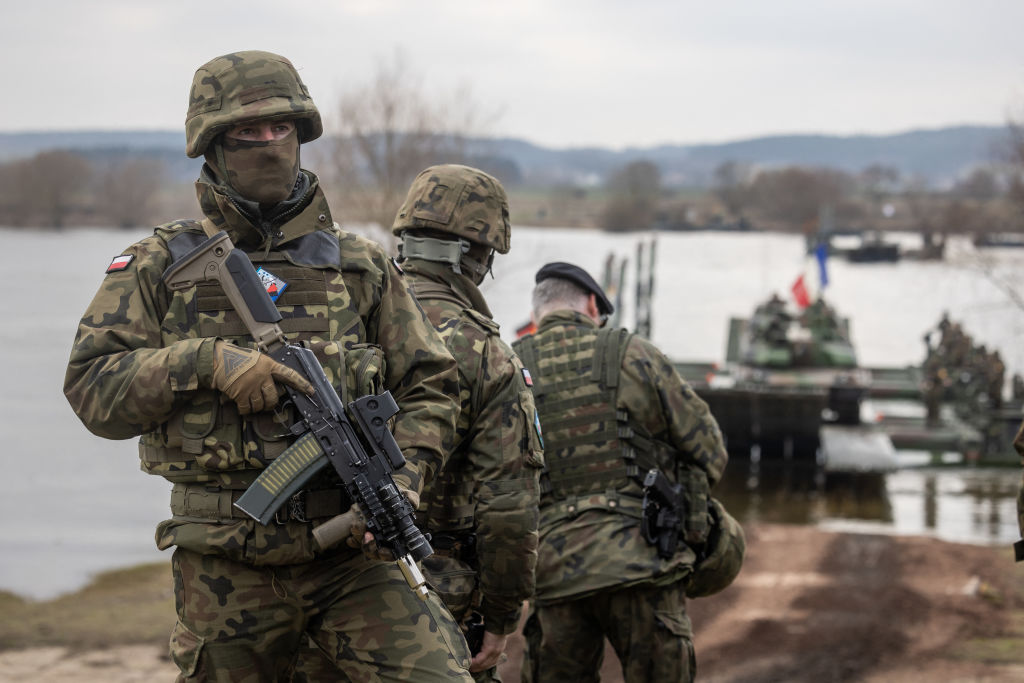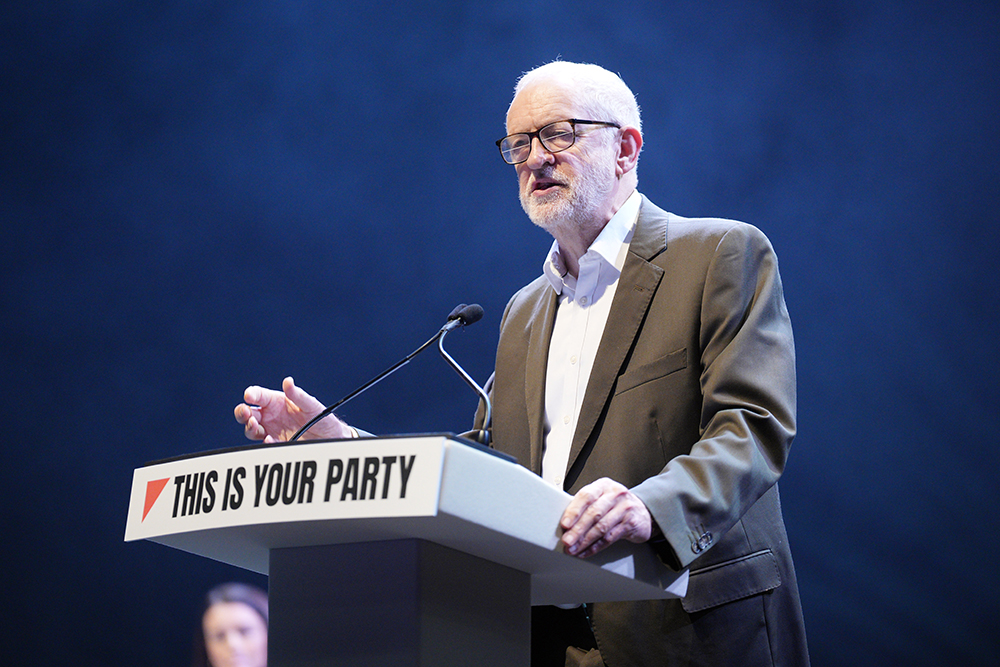On Tuesday, Rishi Sunak chose Poland to announce that the United Kingdom would boost defence spending to 2.5 per cent of national income by 2030 – leading to a real term increase of over £20 billion over the next six years. The UK is confirming itself as Europe’s military champion, but it could achieve even more by following the Polish, Baltic and Nordic example.
Forget Germany’s ‘zeitenwende’, or ‘turning point’; it is Poland and the Baltic and Nordic states which have taken the most extensive measures to deter Russian aggression. Finland and Sweden have joined Nato, something which neither considered necessary even during the height of the Cold War.
States are cooperating to defend their borders from Russia
Poland has the real ‘zeitenwende’, or, as they’d call it, ‘koniec epoki’. According to Nato’s defence spending statistics, Polish military outlay increased from £13.3 billion in 2022 to £23.3 billion in 2023 – a 75 per cent increase! Poland now spends almost 4 per cent of GDP on defence, the largest relative spender in Nato.
The modernisation of the Polish armed forces is actually breathtaking. Significant procurements come from South Korea, showing once again how entwined the Euro-Atlantic and Indo-Pacific regions are becoming. In 2022, Poland procured 1,000 K2 main battle tanks, 672 K9 self-propelled guns, and 12 FA-50 trainer jets from South Korean companies in a deal worth almost £800 million. The Poles put in a further order for 288 K239 Chunmoo launchers – rocket artillery similar to the vaunted American Himarss system – worth over £4.8 billion.
Besides South Korea, Poland has purchased an array of equipment from the United States, including 116 M1A1 Abrams main battle tanks, 18 Himars rocket launchers, 32 F-35A Lightning II combat jets, 96 Apache attack helicopters, and 48 Patriot missile launchers, orders which combined are worth approximately £36 billion. Poland has also ordered 1,400 Borsuk infantry fighting vehicles from domestic Polish suppliers in a deal worth £8 billion.
But that is not all. Due to the deepening Poland-United Kingdom relationship – a consequence of the two nations’ shared threat assessment and the 2018 Polish-British defence treaty – Warsaw has ordered a number of systems from British suppliers. These include £10 billion worth of Sky Sabre air defence launchers and 1,000 Camm missiles to go with them, as well as three Type 31 frigates worth £2 billion for the Polish Navy (to be built in Polish shipyards).
Likewise, the Baltic states – Estonia, Latvia and Lithuania – have underway substantial military modernisation and expansion programmes of their own. The three countries are far smaller than Poland, with around 6 million people between them, but they are highly exposed to Russian aggression. They are narrow, flat and sparsely populated and all are adjacent to Russia. A perennial Baltic fear has been that the Kremlin will either annex Russian speaking towns in Ida-Virumaa county in north-eastern Estonia (on the Estonian-Russian border), or a few kilometres of pine forest in Latvia, to test Nato’s resolve and ideally to fracture the alliance.
These concerns are often exaggerated. Since 2016 and 2017, Nato has reinforced the three nations with an Enhanced Forward Presence. Over 4,000 troops from other Nato allies are now concentrated in Tapa, Estonia, Ādaži, Latvia, and Rukla, Lithuania, which are led by Britain, Canada and Germany, respectively. Together, these forces have been calibrated to deter Russia by denying it the ability swiftly to seize Baltic territory; their presence is a statement of intent from Nato and its nuclear custodians, Britain and America: touch the Baltic states and risk escalation – to the highest level.
But Tallinn, Riga and Vilnius are still determined to play their part. The Soviets annexed all three countries in 1939 and condemned their peoples to decades of dreary tyranny – tens of thousands of Estonian, Latvians and Lithuanians were carted off to the Gulag in cattle trucks, never to be seen again. Russian atrocities in Ukraine only serve to compound their fears.
Accordingly, the Baltic states have buttressed their militaries to the extent that they are now among the leading per capita spenders in Nato. Latvia and Lithuania have reinstated national service (Estonia never gave it up) and all three have ordered numerous new weapons systems, including infantry fighting vehicles, air defence batteries, rocket artillery and anti-ship weapons.
They are also cooperating to defend their borders from Russia: in January, the three countries signed an agreement to build new military bunkers, along with depots and other defences, as well as to share rocket artillery and coordinate air policing.
From a geostrategic standpoint, what does this mean for Britain? In the past, London looked to France and Germany to shore up European security. Today, Poland is fast becoming the fortress of Europe, while the Baltic and Nordic states are becoming the continent’s bulwarks. As the centre of power continues to shift eastwards within Nato, Britain ought to elevate, even prioritise, its relationships with its Polish, Baltic and Nordic allies.







Comments